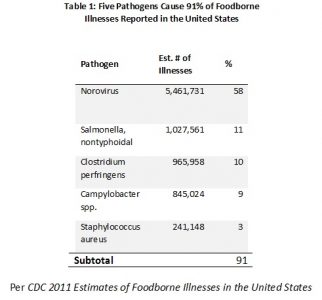The FSMA’s Focus on Prevention to Thwart Foodborne Illnesses
Veröffentlicht Oktober 06, 2016 von Advanced Energy Editor
A recent Fortune article places the annual costs of medical treatment, lost productivity and foodborne-illness-related mortality for affected consumers at $55.5 billion. The industry takes a hit as well to the tune of $7 billion in annual costs from food withdrawals, rejections and recalls.
The Food Safety Modernization Act’s Push on Food Manufacturing
The FSMA, signed into law by President Obama on January 4, 2011, extends the existing food safety regulatory environment by adding an emphasis on prevention. For the past 70 years, food safety regulations focused on responding to contamination. The new law requires greater transparency from the entire supply chain and fundamentally changes the way food is regulated in the United States and abroad.
FSMA Compliance with Food Temperatures
Many food processing companies are already in compliance with numerous temperature-related regulations required by the FSMA. For example, new regulations are consistent with multiple aspects of the existing global Pathogen Reduction, Hazard Analysis Critical Control Point (PR/HACCP), and Current Good Manufacturing Practice (cGMP) requirements. Together, they provide an already established structure for temperature monitoring, data retention and instrument cleanliness.
To monitor quality and process improvements, the FSMA provides an improved, prevention-focused framework that is consistent with PR/HAACP, cGMP and other existing regulations. The framework also supports companies’ efforts to monitor and remedy food safety issues. PR/HAACP requirements and other specific USDA guides already supply temperature regulations for processing meat.
Foodborne Illnesses
Foodborne illness refers to illnesses caused by pathogens as reported by the Centers for Disease Control (CDC). Although the CDC reports on 31 different pathogens, the five listed in Table 1 cause the most illnesses, hospitalizations, and deaths in the United States. Two meat products, chicken and ground beef, account for the most outbreaks and are rated as the highest risk to consumers. The minimum growth temperatures for the two most common pathogens, salmonellae and pathogenic E. coli, are listed at 44.6° F. The minimum growth temperatures for the most common pathogens are listed in Table 2.
.jpg)

You can also view our innovative, easy-to-use data logger thermometers here – strong tools for food safety in the food manufacturing industry. Please contact us with further questions or for sales support.
